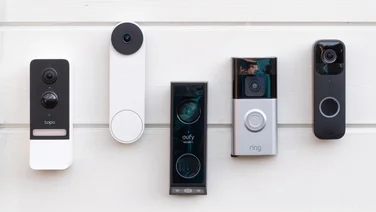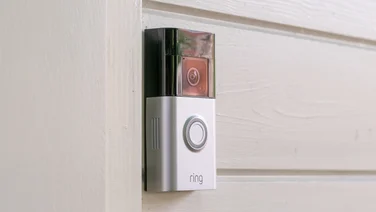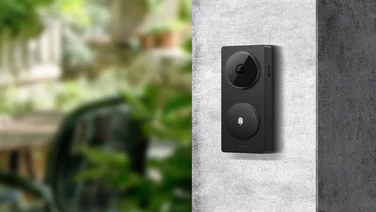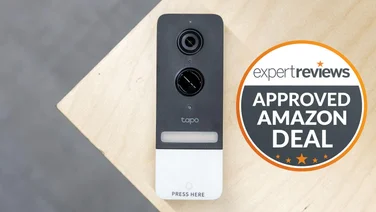To help us provide you with free impartial advice, we may earn a commission if you buy through links on our site. Learn more










- Cheaper than the previous model
- Much improved image quality
- Long battery life
- The new sync module lacks a USB-A port
- Doesn't support the ONVIF standard
- Person detection is flaky and only comes with a subscription
Blink sits below the more expensive and generally more feature-laden Ring range of devices and is the cheapest way to add a comprehensive wireless surveillance-cum-security system to your home.
I’ve found Blink’s devices to be reliable and easy to use since buying a Blink Doorbell in early 2024. Since then, I’ve added an Outdoor 3 camera and three Blink Mini 2 cameras, the latter primarily to act as chimes for the doorbell and as a means to keep an eye on my dog, and nothing has missed a beat.
When I bought the Outdoor 3, the RRP was £75, but I only paid £39; presumably, it was on offer at the time. The Outdoor 4 is currently selling for £70, but frankly, you’d be mad to buy it at that price rather than wait for Amazon’s next sale.
Why are Amazon’s regular discount offers so aggressive? That’s easy to answer: so it can sell subscription plans without which your camera will forever have one arm tied behind its metaphorical back.
What do you get for the money?
Inside the box the Outdoor 4 comes in, you’ll find the camera module, a mounting bracket, the small sync module which acts as a link between the camera and your Wi-Fi network, a USB-C cable, and a USB mains plug.
The camera is powered by a pair of supplied non-rechargeable AA batteries; the cables are for powering the hub. If you want to run the camera unit from mains power, Blink recommends buying one of its £9 IP67-rated weather-resistant cables, which have a serrated seal around the USB-C connector.










The camera housing is IP65 rated, which means it should shrug off the worst the British weather can throw at it, but best not point the VonHause Pressure Washer 1,600W we tested recently, directly at it.
The new Outdoor 4 is thicker than the outgoing model, and it’s heavier, though at only 148g, that makes little difference. The gloss fascia of the old model has been replaced with a matte finish, which makes the new camera look cheaper, so it’s just as well it is cheaper.
The clip-on ball-and-socket wall mount hasn’t changed in any meaningful way and remains a simple, unobtrusive and effective way to attach the camera to a vertical surface.
How easy is it to set up?
As with all Ring and Blink devices, you will need to set up an account and then link that to your Amazon account. Given most people already have an Amazon account, this is hardly an issue.
The next step is to connect and power up the sync module, unscrew the back of the camera housing, pop the battries in, scan the QR code inside the camera (or like me, screw the back plate back on, then realise the QR code is inside, groan, remove back plate) and then follow the on-screen instructions in the app to connect the various parts of the system.
It’s all pretty straightforward forward, but remember that, like previous cameras from Blink, the new Outdoor 4 only supports 2.4GHz Wi-Fi, so make sure your access point isn’t running on 5 or 6GHz only.










Mastering the Blink app is equally easy, largely because the Outdoor 4 is not the most feature-laden camera on the market. From the app landing page, you can enable or disable motion detection and notifications as well as enter the system settings menu. The latter lets you adjust all the basic settings you’d expect from a modern camera, such as detection and privacy zones, retrigger times, video feed quality and volume.
There’s also a continuous recording mode, but this will only run for up to five minutes without a paid subscription. With a subscription, it can record for up to 90 minutes. Recording only continues while you are watching the live stream and requires you to tap the “Continue?” icon every 20 seconds.
Don’t expect the plethora of AI-assisted features you get with outdoor cameras from the likes of Tapo and Reolink: there’s a reason they cost almost twice as much as the Blink Outdoor 4.
What does it do well?
The Outdoor 4 isn’t a massive leap forward from the Outdoor 3, but there have been some important improvements.
The lens now captures a larger area thanks to a diagonal field of view that’s been bumped up from 110 degrees to 143 degrees. Image quality is the same on paper with stills taken at 630 x 360 and video captured at 1,920 x 1,080 and 30fps, but things look brighter, clearer and more colourful than on the Outdoor 3.
At this price point, you have to forgo fancy night-time colour vision and live with a monochrome infra-red video feed once night falls. That said, the Outdoor 4 performs much better than the third-generation cameras at night.










The brightness threshold at which the camera switches from colour to mono IR in Auto mode is lower, and low-light daylight image quality is much improved, lacking the blue tint present in the 3rd-gen camera.
In infrared mode, the new model shows improved detail levels and better contrast, with images looking more black and white and less endless shades of grey.
The speaker has been improved, too, though there’s still no siren option. Speaking through the Outdoor 4’s loudspeaker, my voice was louder and clearer than on the Outdoor 3, though incoming communications sounded much the same.










All the Blink products we’ve tested have proven to be pretty quick when it comes to things like alerts and video feed launch times, and the Outlook 4 continues that tradition. Across-the-board testing times were very similar to the results we got from the Blink Mini 2.
Assuming you don’t want to run your camera on mains power, Amazon reckons the Blink Outdoor 4 will run for two years on the standard batteries and twice that with the enhanced batteries.
That’s impossible to prove or disprove in two weeks, but my Outdoor 3 camera is still running on the batteries it came with nearly a year ago, and the app still shows the battery level as “OK”. My battery tester says they are just over halfway to flat, which suggests that the two-year claim is about right.
What could it do better?
The basic niggle with all Blink and Ring products remains, namely that to make the most of them, you need to take out a paid subscription. This is now more necessary than ever, thanks to the new sync module not having the USB-A port that is a feature of the Sync Module 2. This means you can’t store video or picture files locally.
If you want to store files from the Outdoor 4 locally, you’ll need to buy a separate Sync Module 2 for £40 and a USB thumb drive. This is pure speculation on my part, but given the arrival of the new USB-less sync module with the Outdoor 4 camera, I reckon the Sync Module 2 is not long for this world, thus driving more Blink users towards a paid cloud account.
Another thing to bear in mind is that Blink’s cloud storage only stores files for 30 days maximum, rather than the 180 days you get with a Ring account. If you want to keep your recordings after 30 days, you’ll need to download them.










A basic Blink subscription won’t break the bank, with the single camera package costing £2.50/mth or £25 a year, but the multi-camera option costs £8/mth or £80 for 12 months. There’s nothing in between.
That makes the multi-camera option a bit steep if all you want is support for a Blink Doorbell at the front of the house and an Outdoor 4 camera at the back.
And it’s not just storage you need a paid subscription for. The option to restrict notifications to when the camera detects a person rather than a badger in your garden on a bin bag blowing past in the wind also only works if you have an active, paid subscription.










A word of warning about person detection on the Outdoor 4. It doesn’t work very well. The camera consistently sent me Person Detected alerts, only for me to see Mylo, my greyhound, mooching about in the yard when I opened the video clip.
Another drawback with Blink (and again, Ring) products is that they are limited to the Amazon walled garden when it comes to working with other devices. So, while they play nice with Alexa, they have no truck with Google Home or Apple HomeKit.
As you’d expect, Blink products work a treat with the likes of the Amazon Echo Show 8, which is a real boon if you’d rather not be dependent on your smartphone to manage and monitor your cameras.
Unsurprisingly, neither Ring nor Blink kit supports the ONVIF interoperability standard, so you can forget about linking your Blink Outdoor 4 to home hubs and such made by the likes of Tapo or Reolink, to name but two of the better-known manufacturers of domestic security kit that are part of the ONVIF family.
Should you buy the Blink Outdoor 4?
The Blink Outdoor 4 relies heavily on the three pillars of value, consumer confidence in the Amazon brand, and ease of use. As someone who has a Blink system, I can testify to the first and last parts of that trifecta, while the middle part needs no explanation.
I didn’t pay anywhere near full price for any part of my system, and in the 12 months I’ve had it, all parts of it have worked faultlessly. That said, when my Blink Plus plan expires in August, I’m going to drop down to Basic and limit cloud recording storage to my doorbell: I just don’t think £80 a year is a good use of money when the thumbdrive in my Sync Module 2 can pick up the slack from the other cameras.
Prime Day has been and gone, but a complete Blink bundle with a Doorbell (and a Sync 2 Module), an Outdoor 4, and a couple of Mini 2s for under £100 isn’t out of the question during Black Friday.
That’s an entire domestic camera system for very little money. It’s hard to argue with that sort of value, and if you are happy with the rather basic levels of functionality and with paying for a subscription to store your recordings, you can’t go far wrong.







